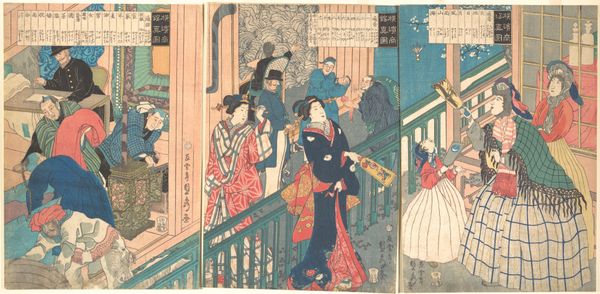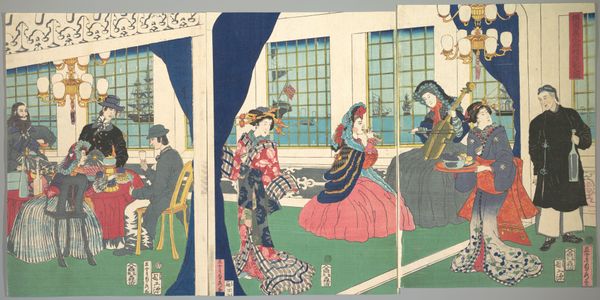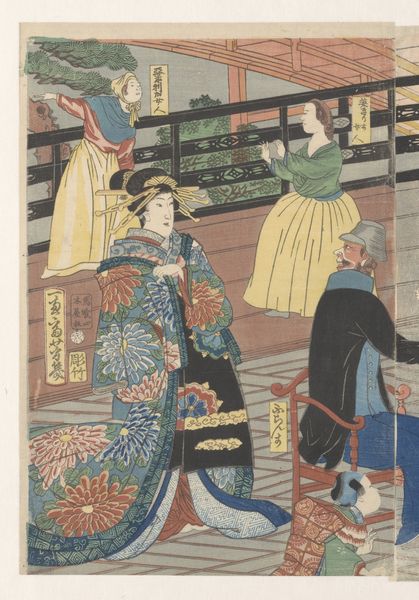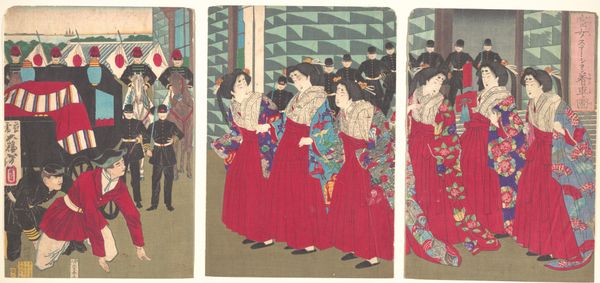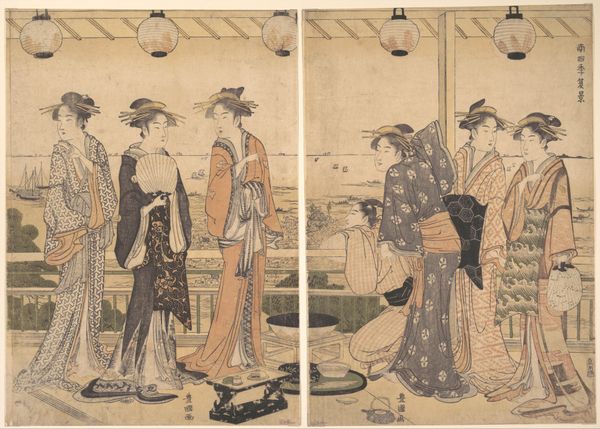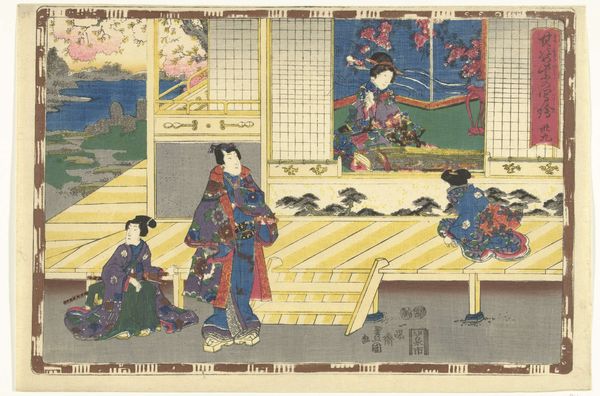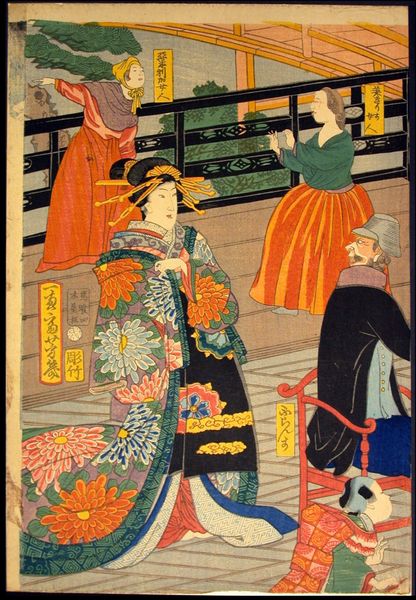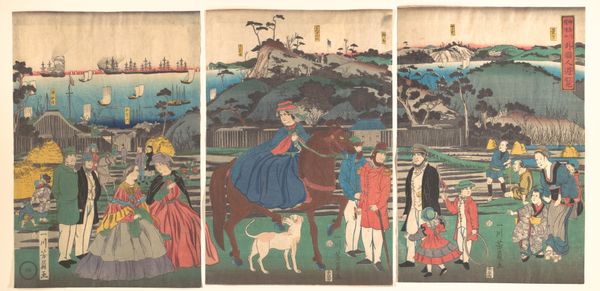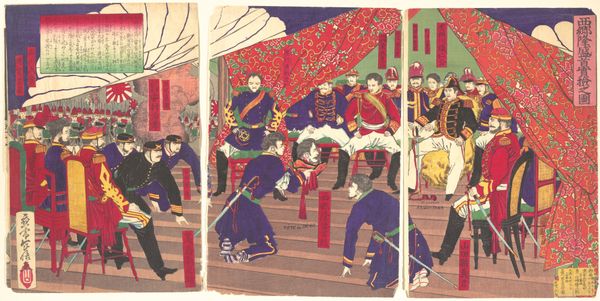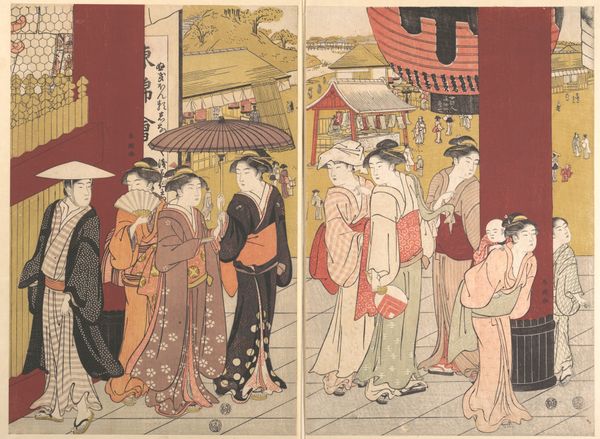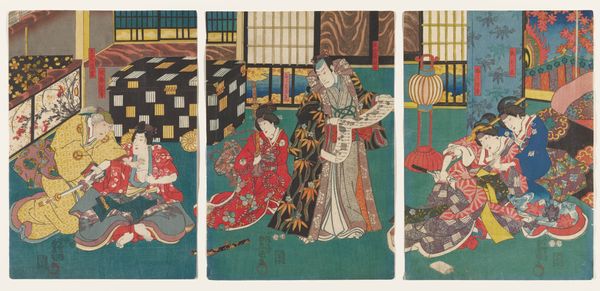
Foreign Business Establishment in Yokohama (Yokohama ijin shōkan shashin no zu) 1861
0:00
0:00
# print
#
dog
#
asian-art
#
ukiyo-e
#
japan
#
men
#
cityscape
#
genre-painting
Dimensions: Image (a): 13 3/4 x 9 1/4 in. (34.9 x 23.5 cm) Image (b): 14 x 9 7/8 in. (35.6 x 25.1 cm) Image (c): 14 x 9 1/4 in. (35.6 x 23.5 cm)
Copyright: Public Domain
Curator: I'm struck by the graphic quality of this print—the bold lines, the defined shapes of people and buildings. Editor: I agree. Let’s dive into this fascinating triptych titled "Foreign Business Establishment in Yokohama," created in 1861 by Utagawa Sadahide. The artwork is currently housed at the Metropolitan Museum of Art in New York. Curator: Immediately, one notes the rigid architectural setting punctuated by those figures in vivid garments. It's as if the artist intended to foreground an almost unsettling cultural friction through form and color contrast. Editor: Absolutely. Look closer—this ukiyo-e print uses woodblock printing techniques to showcase the burgeoning foreign presence in Yokohama. This wasn't merely an artistic rendering; it was documenting, and arguably shaping, public perception of this transformative period. Consider the labor involved—the carvers, the printers, the paper makers—all contributing to the dissemination of this image. The materials used, the specific dyes available at the time, they all influence how we read this image today. Curator: Good point, although I also find the symbolic relationships at play really compelling. The Western figures and their modes of dress create distinct shapes—triangles and vertical blocks—which create a feeling of imposition on the softer curves of the Japanese figures and architecture. What do you think that division conveys? Editor: I think it reveals a certain social hierarchy inherent in the interactions of these figures. There is the presence of these foreigners changing the shape and, therefore, economy of Yokohama itself. You have Japanese people serving them, selling to them, adopting aspects of foreign clothing. Their labor has adapted, it appears, and this artwork stands as evidence. Curator: It is hard to ignore the tension created between an older order giving way and the new presence of foreign influence reshaping both physical and cultural landscapes. But whether this shift signifies cultural enrichment or erosion is left for the viewer to decode in this striking arrangement of shapes, forms, and textures. Editor: Ultimately, what began as a glimpse into the past offers critical insight into power structures that still reverberate. I’ll consider this print as I walk through the international stores in my own neighborhood next time.
Comments
No comments
Be the first to comment and join the conversation on the ultimate creative platform.
